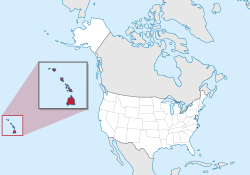Description
The fruit bodies of Marasmius koae are rounded and fan-shaped to hemispherical, measuring 0.3–1.0 cm (0.12–0.39 in) in diameter. The cap surface is dull and dry, grooved, and has a texture ranging from smooth to somewhat velvety. Its color is brownish yellow to pale brownish-orange near the center, with the color fading to pale orange-white to buff or tan near the cap margin. The gills are convex, buff, and remotely spaced, with one irregular series of lamellulae (short gills) interspersed between three and six gills. The fruit body lacks a stipe, having a sessile attachment to the substrate. The fruit body has no distinctive taste or odor. [1]
The thin-walled spores are somewhat fusoid (spindle-shaped) to elongated ellipsoidal in shape, smooth, hyaline (translucent), and measure 12–14.5 by 4–4.8 μm. The basidia (spore-bearing cells) are club-shaped, four-spored, and clamped, measuring 24–28 by 7–9 μm. [1]
This page is based on this
Wikipedia article Text is available under the
CC BY-SA 4.0 license; additional terms may apply.
Images, videos and audio are available under their respective licenses.
